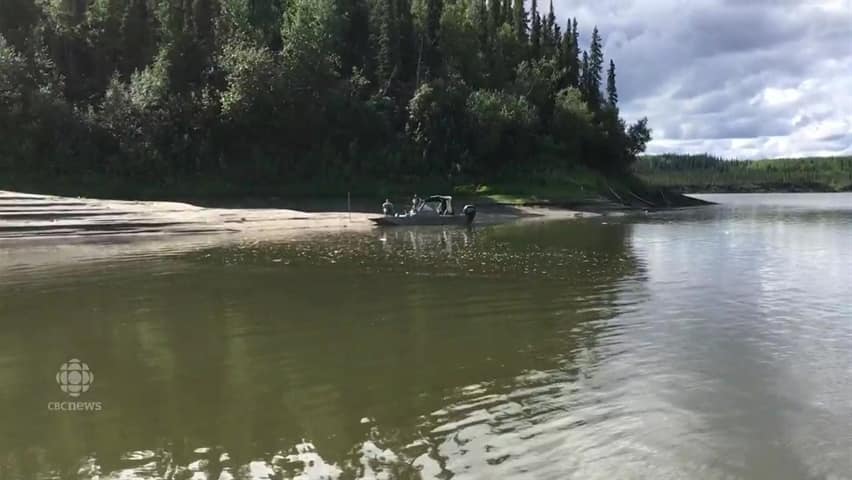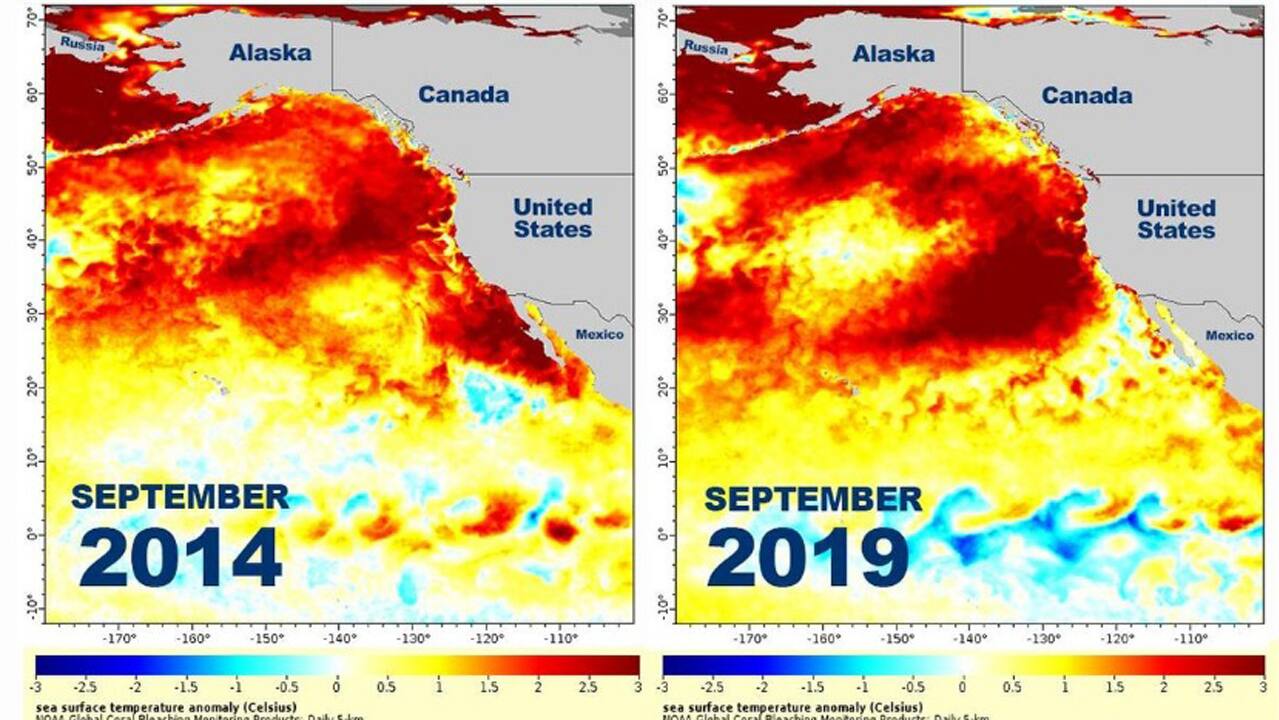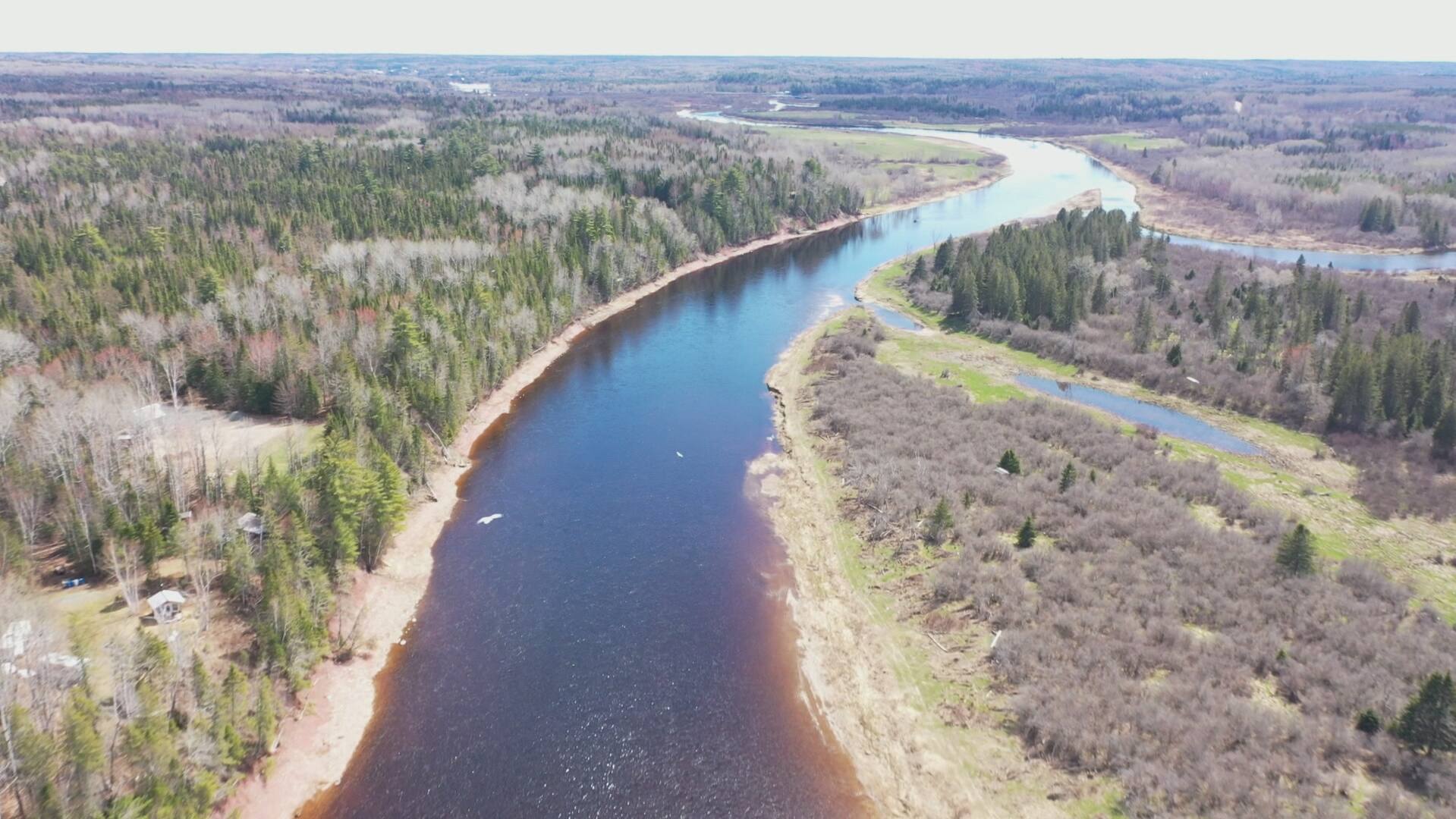Salmon are getting cooked by climate change. Here’s how they could be saved
A heat wave is expected to kill all juvenile chinook salmon in California’s Sacramento River, wildlife officials say. Meanwhile, climate change and extreme heat waves are hitting Canada’s salmon, too, on both coasts. We look at how bad it is here and what can be done to save our salmon.

A heat wave is expected to kill all juvenile chinook salmon in California’s Sacramento River, wildlife officials say. Meanwhile, climate change and extreme heat waves are hitting Canada’s salmon too, on both coasts.
So, how bad is it here, and what can be done to save our salmon? CBC News explains.
What’s happening to salmon in California?
California’s Department of Fish and Wildlife warned last week that among chinook salmon in the Sacramento River “it is possible that all in-river juveniles will not survive this season.” That was due to a heat wave that pushed local temperatures above 37 C, combined with a drought that caused more water to be diverted to cities and farmers, making the river shallower and quick to heat up.
Massacre of #salmon predicted in Sacramento River. The heat wave & #drought are taking their toll – a critical problem being #cawater temperature. Dams stagnate river flow, allowing temperatures to rise & are dangerous for fish: https://t.co/Exek5P0J5t. pic.twitter.com/JlpXkcaDY3
—@CA_Waterkeepers
Has that kind of thing happened further north?
There are some reports of it happening amid this year’s record-breaking heat wave in B.C. The B.C. Wildlife Federation reports that the Okanagan River was more than 23 C this week, causing sockeye salmon to halt their migration.
“There’s a good chance the run will be … doomed by heat,” said Jesse Zeman, director of the federation’s fish and wildlife restoration program.
In 2016, warm temperatures were blamed for the lowest number of returning sockeye in B.C.’s Fraser River on record, and two years later, officials warned that the river was so warm that migrating sockeye salmon might die on their journey. In 2019, there were heat-related salmon die-offs blamed in Alaska and at a fish farm in Newfoundland.
WATCH | Team surveys dead salmon on Alaska river:

A team from the Yukon River Inter-Tribal Fish Commission in Alaska surveys dead chum salmon on the Koyukuk River in July. 2:18
But salmon deaths due to heat aren’t necessarily sudden and noticeable. Many populations of both Pacific and Atlantic salmon have been in gradual decline for decades, and scientists say warmer temperatures and other aspects of climate change have played a role.
How do warm temperatures harm or kill salmon?
Both Atlantic and Pacific salmon are cold-water fish, which means they tend to do best at temperatures in the mid-teens and struggle when it’s over 20 C.
Warm water can harm salmon in several ways. For one thing, warmer water holds less oxygen, making it harder for fish to breathe. Because they’re cold-blooded, they can’t adjust their body temperature relative to the environment when conditions get too warm or too cold. Warmer temperatures speed up their metabolism, causing them to require more oxygen and food, and also forcing them to swim to find cooler waters, consuming more energy.
The heat makes it harder for them to swim and can stress salmon migrating to their spawning grounds, said Sue Grant, head of the state of salmon program at Fisheries and Oceans Canada. As a result, some don’t survive to spawn, and those that do may produce less healthy offspring.
Are other impacts hurting salmon?
Yes. Besides extreme heat, climate change is causing drier conditions. Shrinking glaciers, smaller winter snowpacks and an earlier spring melt reduce the amount and depth of water in rivers, causing them to heat up more quickly, said Aaron Hill, executive director of the Watershed Watch Salmon Society.
“By the late summer, rivers are running low and becoming lethally hot for salmon,” he said.
WATCH | Glacier melt in B.C. at shocking levels:

Hot summer a ‘sad window’ into future without glaciers, reports Chris Brown 10:23
During droughts, humans also divert more water to cities and farmers, leaving less in the rivers — one of the big problems in California’s Sacramento River, but also in water-stressed parts of B.C., such as the Interior and the east coast of Vancouver Island.
People are also taking too much groundwater that would otherwise cool streams as it seeps into them gradually, Hill said.
Deforestation from wildfires, pests such as mountain pine beetle and clearcut logging have increased erosion and landslides that can damage spawning grounds or block salmon migration to those spawning grounds.
“It’s just this compounding, interacting set of impacts, both natural and human caused,” Hill said.
But it’s not just in rivers that salmon face challenges, as they spend much of their life at sea. There, they also face marine heat waves, such as the one dubbed “the blob,” which raised temperatures along the Pacific coast by 3 to 5 C from 2013 until now, said Grant. That has altered the food web, replacing the large, fatty northern zooplankton that salmon normally eat with less nutritious zooplankton from the south.
“Animals that are feeding on these poor-quality animals at the base of the food web will grow more slowly,” Grant said. “They’ll be more vulnerable to predation.”
WATCH | How a new ‘blob’ is set to impact marine life off B.C.’s coast:

A new marine heat wave spreading across a portion of the Pacific Ocean off the coast of British Columbia has so far grown into one of the largest of its kind in the last four decades, officials say, second only to the infamous “blob” that disrupted marine life five years ago. 7:10
Atlantic salmon face similar impacts in the northwest Atlantic, where fish from all populations from both North America and Europe grow into adults.
“That’s having a big impact on sea survival,” Crabbe said, noting that fewer adults have been returning to Canada to spawn since the early 1990s.
Are all salmon vulnerable?
Some are more vulnerable than others. On the Pacific coast, chinook are doing particularly poorly, declining in numbers, size and reproductive rate throughout their range, from California to Alaska, said Grant, lead author of a 2019 report on how Pacific salmon are doing.
Pink and chum, species that spend less time in freshwater, where temperature changes are more extreme, were doing better than chinook, coho and sockeye. Grant said pink and chum did see some decline in 2019 and 2020, after the report was published.

With Atlantic salmon, the young are particularly vulnerable, said Emily Corey, a PhD candidate at the University of New Brunswick, has been studying the effects of heat stress on juvenile Atlantic salmon.
She points to three main reasons why the young are more at risk:
- They spend the first three to five years of their lives in freshwater, where temperatures can get more extreme.
- They don’t swim very well.
- They tend to be territorial, so they don’t like to move to a new location unless they have to.
That said, her research has found that some can move up to several kilometres to find cold water if necessary.
What is being done to reduce impact of extreme heat on salmon?
In June, the federal government announced the $647.1 million Pacific Salmon Strategy Initiative. It includes several kinds of solutions. Many are also targeted at Atlantic salmon under other programs:
Conservation and stewardship
This involves habitat monitoring and restoration, some of the goals of the Watershed Watch Salmon Society and the Atlantic Salmon Federation and its partners.
In Nova Scotia, the Margaree Salmon Association has installed water temperature monitors in the Margaree and Mabout rivers to help find hot spots. When they’re found, work crews will do things such as plant trees to shade the river at those locations.
In New Brunswick, the Miramichi Salmon Association has been enhancing pools of cold water along the river by diverting the river’s flow to carve them out and make them bigger.

On both coasts, conservationists say better land use planning and targeting salmon habitat for protection and reforestation will have a big impact. In New Brunswick, the ASF is working with the provincial government to protect the most-critical cold water springs and brooks feeding into important salmon rivers such as the Miramichi.
In B.C., Hill says there are huge swaths of great potential salmon habitat throughout the Fraser River watershed that have been blocked by structures such as culverts and road crossings. It’s possible to replace those with alternatives that will allow salmon to use that habitat.
Meanwhile, in drier areas, Hill says better water planning is needed, along with licensing and regulating groundwater use, which hasn’t yet been implemented by the provincial government.
Changes, closures to fisheries and harvest
This is one happening on both coasts. In late June, the federal government closed 60 per cent of commercial salmon fisheries in B.C. and Yukon to conserve stocks. Most recreational fisheries for Fraser chinook have also faced widespread closures since 2019.
Many Atlantic salmon commercial fisheries have also closed. In 2018, the Atlantic Salmon Federation struck a 12-year deal with partners in Iceland and Greenland to ban commercial fishing on the west coast of Greenland and in the Faroe Islands. Already, more salmon seem to be returning to Canada, Crabbe said.
WATCH | Atlantic salmon returned from the ocean in greater numbers last year:

Biologists find glimmer of hope in year of higher Atlantic salmon numbers. 3:49
Important cold water pools in the Miramichi River system in N.B. are typically closed to recreational fishing when the water temperature exceeds 20 C, Crabbe added. In 2018, there were almost 60 days like that.
Stocking programs. Enhanced hatchery production is one of the solutions in the federal Pacific salmon strategy. In California, officials aim to save some Sacramento River chinook by trucking them to a hatchery. Hill said there are some desperate situations that call for that kind of response. But in general, it’s controversial, as there’s evidence hatchery-raised salmon are less fit to survive than their wild counterparts.
Could salmon go extinct due to climate change?
“No one’s worried that they’re all going to disappear,” Grant said.
They do seem to be adapting to climate change to some extent. Both Atlantic and Pacific salmon are being found further north, and some northern populations are doing well. But some populations could disappear, especially in the south, and the loss will be felt by communities with deep and strong connections to salmon, both Crabbe and Grant say.
“They’re really critical, critically important to the indigenous people of Western Canada for food, social, ceremonial reasons, and also really play a big role in fisheries,” Grant said. “They’re embedded in the culture … probably to all Canadians.
